I'm simulating the following circuit in PySpice:

simulate this circuit – Schematic created using CircuitLab
In this configuration, the N-JFET is always in saturation mode, as you can see by the plot of Vds - (Vgs - Vto) = Vds - Vgt, which is always positive:
Hence, the value of Id should be given by the following equation, according to the S&H model:
$$ I_d = 0.5 \beta (V_{gs} - V_t)^2 (1 + \lambda V_{ds}) $$
However, when I compare the value of the measured Id = (Vdd - Vd) / Rd to the one calculated from the formula above, I get the following mismatch:
Could anybody help me on what I missed here? Below you can find the Python code:
import numpy as np
import matplotlib.pyplot as plt
from PySpice.Spice.Netlist import Circuit
from prefixed import Float
def main():
F0 = 20 # [Hz]
FS = 48000 # [Hz]
temp_c = 20 # [celsius]
A = 1.0 # [V] amplitude, linear
T = 0.1 # [seconds]
# Spice circuit, based on the LSK189A from LTSpice
circuit = Circuit('JFET')
LSK189A = circuit.model("LSK189A", "NJF",
Beta="2.2m",
Betatce="-0.5",
Vto="-1.13",
Vtotc="-2.5m",
Lambda="4.3m",
Is="3f",
Xti="0",
Isr="0",
Alpha="30u",
N="1",
Rd="11",
Rs="30",
Cgd="3.19p",
Cgs="2.92p",
Fc="0.5",
Vk="120",
M="320m",
Pb="0.8",
Kf="0.0009f",
Af="1",
Gdsnoi="2.15",
Nlev="1", # changed from original 3
Mfg="Linear_Systems",
)
# component values
Vdd = 9.0
Rg = 1E6
Rd = 4.4E3
Rs = 1E3
# Netlist
circuit.V('Vdd', 'vdd', circuit.gnd, Vdd)
circuit.SinusoidalVoltageSource(
'in', 'gate', circuit.gnd, amplitude=A, frequency=F0)
circuit.R('Rg', 'gate', circuit.gnd, Rg)
circuit.R('Rd', 'vdd', 'drain', Rd)
circuit.R('Rs', 'source', circuit.gnd, Rs)
circuit.J('JFET', 'drain', 'gate', 'source', model="LSK189A")
jfet_spice_params = {
p.upper(): LSK189A._parameters[p]
for p in LSK189A._parameters
}
plt.figure()
plt.title('Id x t')
# Spice model
simulator = circuit.simulator(
temperature=temp_c, nominal_temperature=temp_c)
# analysis = simulator.dc(Vin=Vsl)
analysis = simulator.transient(step_time=1/FS, end_time=T)
y_id_spice = (np.array(analysis["vdd"]) - np.array(analysis["drain"])) / Rd
y_vgt_spice = np.array(
analysis["gate"]) - np.array(analysis["source"]) - Float(jfet_spice_params["VTO"])
y_vds_spice = np.array(analysis["drain"]) - np.array(analysis["source"])
# if > 0 then saturation
y_limit_spice = y_vds_spice - y_vgt_spice
t = np.array(analysis.time)
plt.plot(t, y_id_spice, label="Id_spice")
Id_spice_calc = (1 + Float(jfet_spice_params["LAMBDA"]) * y_vds_spice) * 0.5 * Float(
jfet_spice_params["BETA"]) * y_vgt_spice**2
plt.plot(t, Id_spice_calc, label="Id_spice_calc")
plt.xlabel('T [s]')
plt.ylabel('Id [A]')
plt.margins(0, 0.1)
plt.grid(which='both', axis='both')
plt.legend()
plt.figure()
plt.title('V x t')
plt.plot(t, y_vgt_spice, label=f"Vgt")
plt.plot(t, y_limit_spice, label=f"Vds-Vgt")
plt.xlabel('T [s]')
plt.ylabel('V [V]')
plt.margins(0, 0.1)
plt.grid(which='both', axis='both')
plt.legend()
plt.show()
if __name__ == "__main__":
main()

